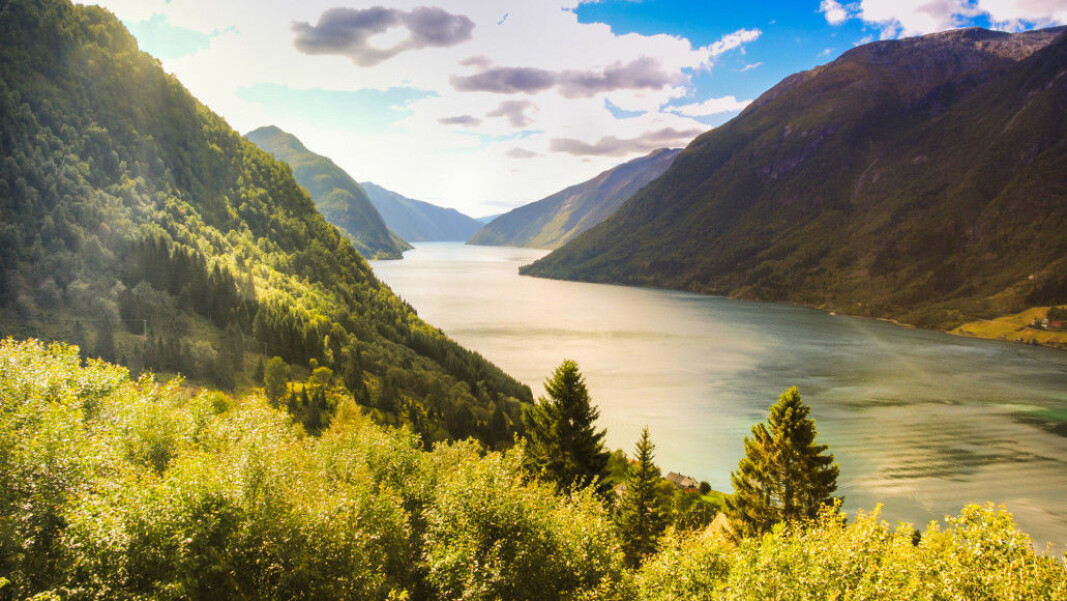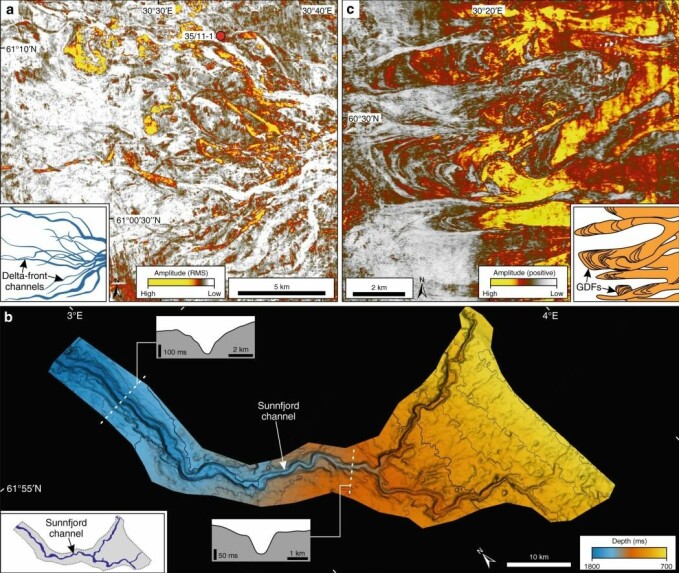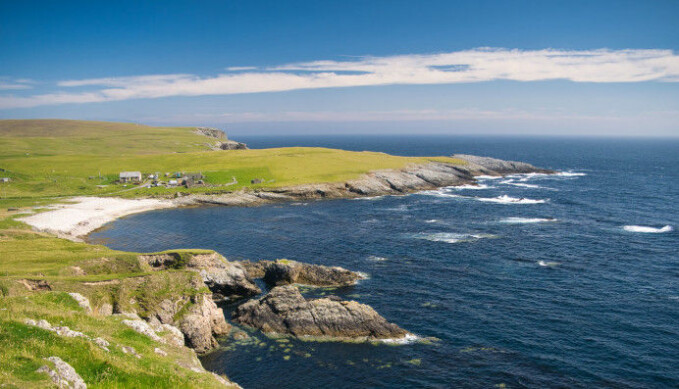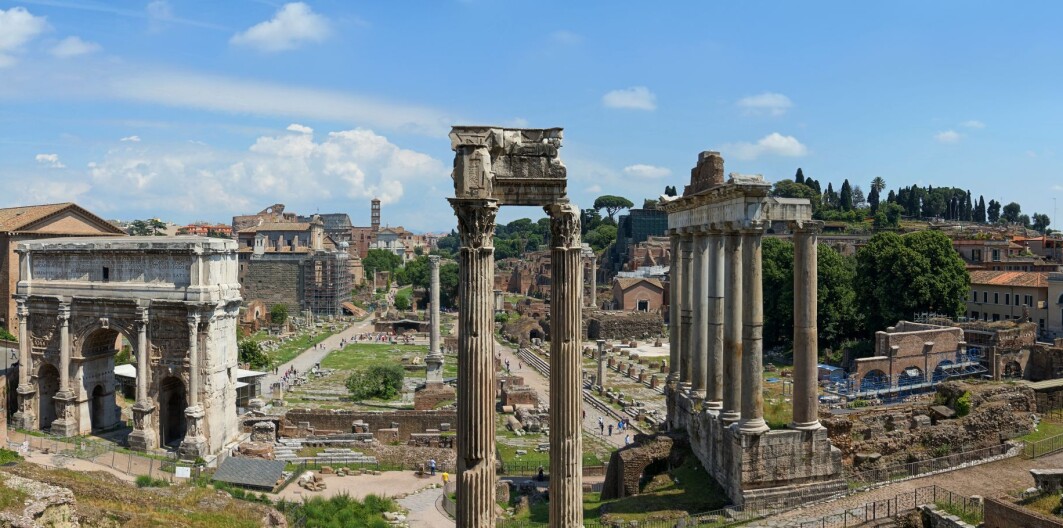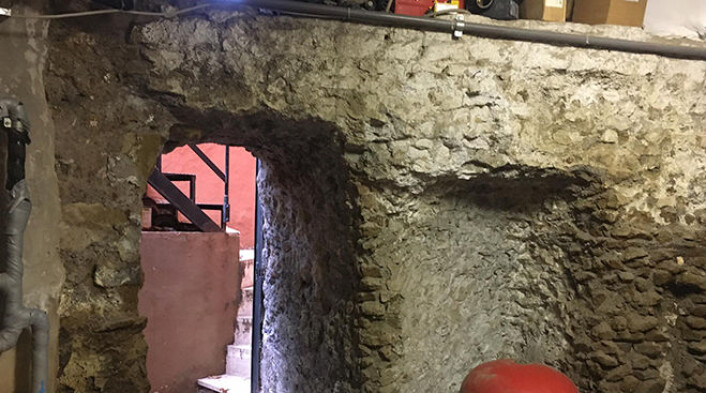Thousands flee Islamist insurgents in northern Mozambique
LAST WEEK ISLAMIST'S DID A MASS BEHEADING IN A SPORTS STADIUM
01/08/2020 -

The image on the left shows a scorched home in Cabo Delgado. The image on the right shows people fleeing Mocimboa da Praia, which was attacked by insurgents on June 27. These photos were published by the collaborative media site Pinnacle News.
Since October 2017, an armed Islamist insurrection has been tearing apart the resource-rich province of Cabo Delgado in northern Mozambique. In 2019, the Islamic State group began claiming responsibility for some of the attacks carried out by this group. In the past few months, the insurgents have led a campaign of brutal and violent attacks on towns and cities in the province, causing thousands of residents to flee.
An armed group known locally as al Shabaab (though it has no links with the better-known Somali Islamist militant group of the same name) has been carrying out attacks in Cabo Delgado, which is rich in gas deposits, since October 2017. Over the past three years, more than 1,400 people have been killed in these attacks, according to the NGO The Armed Conflict Location & Event Data Project (Acled), which is documenting the situation in Cabo Delgado.
The group’s last large-scale attack, which occurred on June 27, was claimed by IS-Cap, the Islamic State’s Central Africa Province. On June 27, the insurgents attacked Mocimboa da Praia, a port town with a population of 30,000 that represents "a crucial logistical hub for economic activity and humanitarian relief for the northern part of the province", according to Acled. At least 40 civilians were killed along with eight employees of a South African company contracted by the French company Total. Witnesses told the press that the attackers, who occupied the town for three days, decapitated civilians, such as teachers and members of ruling party Frelimo, who had links to the government.
Mozambique
Video released by @news_pinnacle telegram channel with scenes from MdP pic.twitter.com/3oK0OxMgA4 Jasmine Opperman (@Jasminechic00) July 25, 2020
This video, which was posted on Telegram by the collaborative media outlet Pinnacle News, shows the destruction in Mocímboa da Praia. Jasmine Opperman, an analyst at the NGO Acled, reposted this on Twitter.
Attacks on provincial capitals
This attack, the third against Mocimboa da Praia since 2017, was part of a series of offensives that targeted major towns in Cabo Delgado over the past few months.
On March 23, insurgents took over Mocimboa da Praia. Two days later, they attacked the town of Quissanga, located 200 kilometres to the south, and destroyed a number of important buildings, including one housing the local government, which has since suspended its activities completely. Insurgents wielding an IS group flag posted a video online announcing their intention to impose Islamic law on the region.
In April, insurgents launched several attacks on the district of Muidumbe, targeting both Namacande, the provincial capital, and several villages. According to police, insurgents carried out a massacre in Xitaxi on April 7, slaughtering 52 young men when they refused to join the group. In the village of Nangololo, the insurgents attacked a church, as illustrated by several photos posted on social media.
Mozambique
Aftermath of attack at Nangololo: Catholic missionary church (Muidumbe). Attack was on 09 April
Photo credit: Pinnacle News pic.twitter.com/P1MWNho4PF Jasmine Opperman (@Jasminechic00) April 11, 2020The Mozambican collaborative news site Pinnacle News posted these images after insurgents attacked a church in Nangololo (Muidumbe). Jasmine Opperman, an analyst at the NGO Acled, posted these images on Twitter. You can see another video here.
Assim está parte da aldeia #Muatide em #Muidumbe após ataque desta semana. Que fique claro que eles não só sabotam instituições do Estado, mas também privadas. Na primeira foto podemos ver um centro de cópias incendiado. #CaboDelgado #Mocambique pic.twitter.com/iY1rhCTpHS Alexandre (@AllexandreMZ) April 9, 2020
A journalist from Zitamar News posted photos of the attack on Muatide, a village in Muidumbe. He explained that the insurgents destroyed both government buildings and private property.
On May 28, insurgents led an assault on the town of Macomia, population 29,000, which had already absorbed many refugees who had fled previous attacks on other communities. The town’s health centre was pillaged and staff for medical charity Doctors Without Borders fled. In early June, the organisation suspended its activities in the province.
Since October 2017, an armed Islamist insurrection has been tearing apart the resource-rich province of Cabo Delgado in northern Mozambique. In 2019, the Islamic State group began claiming responsibility for some of the attacks carried out by this group. In the past few months, the insurgents have led a campaign of brutal and violent attacks on towns and cities in the province, causing thousands of residents to flee.
An armed group known locally as al Shabaab (though it has no links with the better-known Somali Islamist militant group of the same name) has been carrying out attacks in Cabo Delgado, which is rich in gas deposits, since October 2017. Over the past three years, more than 1,400 people have been killed in these attacks, according to the NGO The Armed Conflict Location & Event Data Project (Acled), which is documenting the situation in Cabo Delgado.
The group’s last large-scale attack, which occurred on June 27, was claimed by IS-Cap, the Islamic State’s Central Africa Province. On June 27, the insurgents attacked Mocimboa da Praia, a port town with a population of 30,000 that represents "a crucial logistical hub for economic activity and humanitarian relief for the northern part of the province", according to Acled. At least 40 civilians were killed along with eight employees of a South African company contracted by the French company Total. Witnesses told the press that the attackers, who occupied the town for three days, decapitated civilians, such as teachers and members of ruling party Frelimo, who had links to the government.
Mozambique
Video released by @news_pinnacle telegram channel with scenes from MdP pic.twitter.com/3oK0OxMgA4 Jasmine Opperman (@Jasminechic00) July 25, 2020
This video, which was posted on Telegram by the collaborative media outlet Pinnacle News, shows the destruction in Mocímboa da Praia. Jasmine Opperman, an analyst at the NGO Acled, reposted this on Twitter.
Attacks on provincial capitals
This attack, the third against Mocimboa da Praia since 2017, was part of a series of offensives that targeted major towns in Cabo Delgado over the past few months.
On March 23, insurgents took over Mocimboa da Praia. Two days later, they attacked the town of Quissanga, located 200 kilometres to the south, and destroyed a number of important buildings, including one housing the local government, which has since suspended its activities completely. Insurgents wielding an IS group flag posted a video online announcing their intention to impose Islamic law on the region.
In April, insurgents launched several attacks on the district of Muidumbe, targeting both Namacande, the provincial capital, and several villages. According to police, insurgents carried out a massacre in Xitaxi on April 7, slaughtering 52 young men when they refused to join the group. In the village of Nangololo, the insurgents attacked a church, as illustrated by several photos posted on social media.
Mozambique
Aftermath of attack at Nangololo: Catholic missionary church (Muidumbe). Attack was on 09 April
Photo credit: Pinnacle News pic.twitter.com/P1MWNho4PF Jasmine Opperman (@Jasminechic00) April 11, 2020The Mozambican collaborative news site Pinnacle News posted these images after insurgents attacked a church in Nangololo (Muidumbe). Jasmine Opperman, an analyst at the NGO Acled, posted these images on Twitter. You can see another video here.
Assim está parte da aldeia #Muatide em #Muidumbe após ataque desta semana. Que fique claro que eles não só sabotam instituições do Estado, mas também privadas. Na primeira foto podemos ver um centro de cópias incendiado. #CaboDelgado #Mocambique pic.twitter.com/iY1rhCTpHS Alexandre (@AllexandreMZ) April 9, 2020
A journalist from Zitamar News posted photos of the attack on Muatide, a village in Muidumbe. He explained that the insurgents destroyed both government buildings and private property.
On May 28, insurgents led an assault on the town of Macomia, population 29,000, which had already absorbed many refugees who had fled previous attacks on other communities. The town’s health centre was pillaged and staff for medical charity Doctors Without Borders fled. In early June, the organisation suspended its activities in the province.
Aftermath of the insurgent attacking Macomia pic.twitter.com/0v5AJZ0tOM Pinnacle News (@news_pinnacle) May 31, 2020
These shops in Macomia were burned by insurgents, as shown in this video shared by Mozambican collaborative media outlet Pinnacle News. The video was geolocalized here.
Thousands of people have fled their homes in these districts. Since March, the number of internally displaced persons in Cabo Delgado has doubled, reaching 250,000 in July, according to the OCHA, the UN’s Office for the Coordination of Humanitarian Affairs.
CABO DELGADO - Mocimbua
28-6-220
Por causa da intensidade dos combates entre integrantes das FADM e DAESH, população refugia-se para distritos supostamente seguros, usando a via marítima, sem mantimentos e sem certeza sobre o como serão acolhidos, no destino. pic.twitter.com/41iZNdkAY4 Pinnacle News (@news_pinnacle) June 28, 2020
People flee Mocímboa da Praia for Pemba, the capital of the province in these photos shared by the Mozambican collaborative media outlet Pinnacle News.
Before leaving their villages, people who intend to flee the conflict in Cabo Delgado have to get a declaration of residence which is issued by the respective local leader. This document is a confirmation of refugee status. It costs 100 MT (~ USD $1.5) which is costly for many. pic.twitter.com/Wd5DHZSNjZ Pinnacle News (@news_pinnacle) May 26, 2020
Before leaving their villages, people attempting to flee the conflict in Cabo Delgado had to get a residence certificate from local officials, explains the caption of this photo published by Mozambican collaborative media outlet Pinnacle News. "This document is the confirmation of their status as refugees,” explains the media outlet. It costs about $1.50.
"We walked 60 kilometers and spent three days in the forest”
The city of Pemba, which is the capital of Cabo Delgado, is today home to a large number of displaced persons. While some of them arrived shortly after the last attack on Mocimboa da Praia, others have been there for several months, says Miguel Momade, a farmer who fled Quissanga with his family:
"The evildoers arrived in Quissanga the morning of March 25. My family and I hid for an entire night. The next day, we returned to our home and we saw that the house had been burned down. We lost everything. That’s why we left. When we got here, we had to ask for clothing, especially for the children.
We had to walk nearly 60 kilometres and spent three days in the forest before we managed to find a truck to bring us to Pemba. I knew that I could find a place to stay there because my sister lives there. I brought 20 people with me, including several children.
The house where we are staying isn’t big and there isn’t enough food. The children wake up crying because they are hungry. In Quissanga, I had a job so that I could feed my family. Here, I don’t have anything. I’d like to go back there but only when the government of the district has also returned."

Miguel Momade’s family in Pemba. This photo was sent to our team by Georginelta Eurosia Eduardo, who is a member of the "Ukhavihera" movement (see the second part of this article to find out more).
"There are many more displaced people than have been counted by the government"
Emidio Beula is a journalist and a researcher for the Center for democracy and development (CDD). He says that aid organisations have been overwhelmed by the large increase in the number of displaced people.
"Before, most of the displaced people remained in their home districts, fleeing from one village to another, or heading towards the provincial capital. Many people fled just five or 10 kilometres. But when the insurgents started attacking more villages as well as the provincial capitals in late March, people started fleeing further.
Two districts were abandoned – Quissanga and Mocimboa da Praia. In the town of Metuge, not far from Pemba, the government set up a camp with enough tents to house 10,000. But that only accounts for a small number of displaced people. Others went to stay with friends or family in Pemba, in other neighbouring provinces or in Tanzania.
There are many more displaced people than have been counted by the government. Some, we don’t know how many, are currently surviving in the wilderness with nothing. No roof, no water, no food. A lot of these people are too elderly or too poor to travel elsewhere. Moreover, when Mocimboa da Praia was attacked, many people climbed into overcrowded boats to travel dozens of kilometres by sea to Pemba and we have no idea if they all arrived safely. It’s hard to get information and journalists have very little access to the zones under attack.

This photo, which was published by the Mozambican collaborative media outlet Pinnacle News on Facebook on July 7, shows displaced people in Mueda in Cabo Delgado. According to the original post by Pinnacle News, some people were unable to find shelter there and had to follow the road all the way to Montepuez.
What do we know about the insurrection?
Researcher Eric Morier-Genoud, a professor of African history at Queen’s University in Belfast, says the armed group grew out of a religious cult that has been around "since at least 2007".
"The change occurred around 2016 when they stopped just living outside of society with their own rules and instead adopted a vision of jihad, picking up arms in an attempt to force the society to adopt sharia law [Islamic law],” Morier-Genoud said.
The group carried out their first large scale attack in October 2017 in Mocimboa da Praia. Currently, there are between 500 and 1,000 fighters, most of whom are Mozambican.The cult began before the development of the gas extraction industry in the region and the ruby mine in Montepuez.
Morier-Genoud says the "economic and social transformation in the 2010s surely lead to frustration, especially in terms of the expected benefits of these discoveries [for the local population]”.
In May 2018, a photo showing these combattants brandishing a Islamic State flag circulated widely on social media in Mozambique. But it wasn’t until June 2019 that the Islamic State organisation released a statement about one of the attacks in the province. Initially, Mozambican authorities denied that the organisation had an active presence on their territory. They finally confirmed on June 23, 2020 that the Islamic State organisation had claimed responsibility for the attack in Cabo Delgado, “revealing the presence of an exterior aggression on the part of terrorists".
The insurgents equipped themselves by stealing the weapons belonging to the security forces, and stealing food and other supplies during attacks.
"None of the rumours that they are involved in the illegal trade of wood, precious stones or drugs have been proved," says Eric Morier-Genoud.
Article by Maëva Poulet








